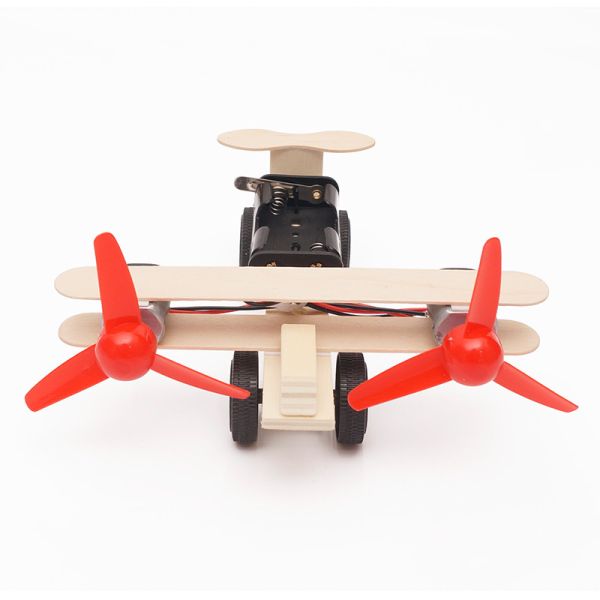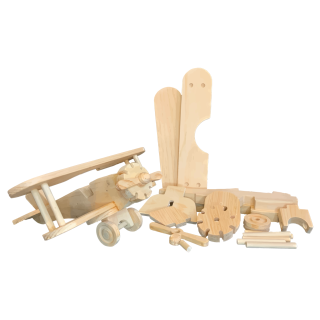All Categories
Twin Prop Airplane Kit - Cat# 80-50-w254
In stock
SKU
80-50-w254
CA$8.40
- Buy 2 for CA$7.70 each and save 8%
- Buy 6 for CA$7.00 each and save 17%
Twin Prop Aircraft Kit — A Hands‑On STEM Experience
Introduce your students to the principles of aerodynamics and mechanical systems with the Twin Prop Aircraft Kit. This engaging project allows students to build a model airplane powered by dual propellers, providing a practical application of science and engineering concepts in a classroom setting.
What’s in the Kit & How It Works
The kit includes:
Plastic components for assembly
Dual propellers
Clear and simple instructions for assembly
- Batteries NOT included (2 x AA batteries required)
Students will assemble the components to create a working twin-propeller airplane. By attaching the propellers and turning the mechanism, students can observe how the dual propellers work together to propel the aircraft forward, simulating the operation of a real twin-engine airplane.
STEM Concepts Illuminated
This kit provides an excellent opportunity to explore various STEM concepts:
| STEM Area | Key Concepts | Classroom Applications & Extensions |
|---|---|---|
Aerodynamics | Lift, thrust, drag, stability | Discuss how twin propellers affect the balance and stability of an aircraft; explore the principles of flight. |
Mechanical Systems | Gears, motion, mechanical advantage | Examine how gears and mechanical systems are used to transfer motion; understand the role of each component in the system. |
Engineering Design | Efficiency, propulsion systems | Discuss design considerations for real-world aircraft; explore how different configurations affect performance and efficiency. |
Physics | Energy transfer, mechanical advantage | Discuss how energy is transferred through mechanical systems; explore the concept of mechanical advantage. |
Technology | Application in aviation | Relate the concepts learned to real-world applications in aviation and aerospace engineering. |
Why Teachers Will Love It
Hands-On Learning: Students actively engage in building and understanding the mechanics of a twin-propeller airplane.
Cross-Disciplinary Connections: Integrates concepts from science, technology, engineering, and mathematics.
Encourages Critical Thinking: Students can experiment with different configurations and observe outcomes.
Affordable and Scalable: Cost-effective for classroom use and suitable for group activities.
Classroom Activity Ideas
Propeller Efficiency Test: Test how different sizes or shapes of propellers affect the performance of the airplane.
Design Challenge: Encourage students to modify the design of the airplane to improve efficiency or performance.
Aerodynamics Experiment: Explore how changes in the design affect the lift and stability of the aircraft.
Real-World Applications: Discuss how the principles learned apply to real-world aviation and aerospace engineering.










